“Smart Planet: Andy Stanford-Clark’s time has really come. His career of work in lightweight brokers and sensors is now going to pay off,” twittered James Governor (@monkchips), Redmonk, recently.
The picture opening this post (from Andy Piper’s Flickr stream} was taken during Andy Stanford-Clark’s talk at The Inaugural HomeCamp (for more photos see Flickr “homecamp08″).
HomeCamp ’08 was organized by Chris Dalby and Dale Lane and sponsored by Current Cost and Redmonk. A video of Andy Stanford-Clark’s talk, by Andy Piper, is up on Viddler. Also see Andy Piper’s post abut CurrentCost meters and most recently about running his CurrentCost meter’s graphs on his iphone.
Ambient displays were a hot topic at HomeCamp see here and here for some good examples.
I first wrote about IBM Master Inventor Andy Stanford-Clark’s Home Automation project June of 2007. At that time relatively few people were playing with home monitoring. But now the lynch pin of Andy’s work - MQTT and RSMB – Really Small Message Broker, is available free on IBM AlphaWorks for anyone to download and play with.
This puts a key tool into the hands of developers and mashup artists ready to explore the possibilities of home automation as a generative technology that can bring the power of participatory culture to the urgent task of creating sustainable living. Andy points out:
“Lots of people can start playing with home energy monitoring, social aspects of the data sharing, home automation, ambient displays, etc. The powerful thing about messaging middleware like MQTT, is that you don’t have to worry about how to get the messages from A to B: you can focus on how to capture the data, and what to do with it when it gets to the other end.”
The full interview, that I did with Andy last week, is later in this post.
Also recently, I did an interview with Gavin Starks, founder of AMEE. As a neutral data aggregation platform, “AMEE’s vision is to enable the measurement of the “Carbon Footprint†of everything on Earth.” A press release last week announced that a “collaboration between O’Reilly Alphatech Ventures (OATV), Union Square Ventures (USV) and The Accelerator Group (TAG) will enable AMEE to expand its reach by enhancing its data, and extend globally.”
The combination of a neutral aggregation platform and MQTT and RSMB can enable new forms of data sharing to meet broader sustainability goals (see my interview with Gavin for AMEE’s direction re privacy and data sharing), and the kind of ecological intelligence that Larry Brilliant, Google.org, talked about at Web 2.0 Summit. Dan Goleman’s new book: “Ecological Intelligence: How Knowing the Hidden Impacts of What We Buy Can Change Everything,†will come out in April, 2009. (see my previous post).
There is already a virtual worlds integration to AMEE by Jim Purbrick of Linden Lab!
Links For HomeCamp ’08
Chris Dalby has a list of blog posts about homecamp in his HomeCamp Review.
Homecamp by Dale Lane
Home Camp Unconference – inspired me by the thoughts
The Inaugural Homecamp
Home Camp Deman Shifting
Homecamp from Phoebe Bright
Homecamp ’08
HomeCamp Event: Andy Stanford-Clark’s View
Virtual HomeCamp
In 2007, I published the picture below (thanks Annie Ok as Destroy Television for SL pics) which shows:
On the right the virtualization of Andy’s RL house which is part of a Second Life Real Life Home Automation project. The pictures in the bottom row shows Mrs Stanford-Clark’s Real Life Llamas on the left and their virtual counterparts on Second Life on the right. Real and Virtual Llamas are linked through GPS and MQTT so people can “track the trek” when the llamas are out on a walk (see this IBM podcast).
I am currently working on a Virtual HomeCamp which will probably be nomadic from meetup to meetup but will kick off in Andy’s virtual house in Second Life. Andy Stanford-Clark, Adam Frisby (one of the founders of OpenSim ), and Chris Dalby have all agreed to talk (more presenters to come!) at the first Virtual HomeCamp.
Charles Crinke, OpenSim has offered Virtual HomeCamp a patch of land on OSGrid, and to give a talk on interesting home automation projects to get started in OpenSim. Charles has a cornucopia of great ideas!
And Kyle Gomboy (avatar G2 Proto) of the Microsoft Developer Community has set up an OpenSim on ReactionGrid that virtual HomeCampers can use to develop projects related to participatory culture and sustainable living.
The interview with Andy Stanford-Clark in this post gives Virtual HomeCampers some great ideas for good projects “that matter” to work on.
If you have a Second Life or OpenSim venue and you would like to offer your sim for a meetup – please let me know! Meetups will need to be streamed to the web as there is already a dynamic and rapidly growing HomeCamp community. See:
HomeCamp Blog
HomeCamp on Upcoming
HomeCamp on Facebook
Google Group Discussion
Reducing the Carbon Footprint of Avatars and Getting Energy Awareness to the Masses
As Andy notes:
“We need to get energy awareness and energy saving to the masses; and by saying “you can reduce energy by interacting in a virtual 3D world”, just isn’t going to cut it for all but a very small fraction of the people we need to get to.”
But, perhaps, some of our phenomenal OpenSim developers will push the envelope and produce the code that will make open source virtual worlds one of the most important future contributors to sustainable living. And, hopefully, Virtual HomeCamp will leverage both the collective intelligence of the web and the real time presence plus rapid prototyping capabilities unique to immersive 3D virtual worlds, to explore new ways to get energy awareness and energy saving to the masses in the short term as well as the long term.
And yes we will have to address the topic of those energy-hogging avatars!!!
Adam Frisby has been doing some interesting work with OpenSim that has the potential to reduce the energy consumption of VWs. And Michael Osias, IBM, told me:
“We operate the IBM grid [100 OpenSims] on almost all virtual machines with Xen. Recently, we migrated the opensim appliance into the IBM Research cloud appliance catalog.”
So I will definitely be calling on Michael and Adam to present on how server virtualization and cloud computing can reduce the carbon footprint of avatars.
Setting Up Your Own Home Automation Hub
There is an amazing choice of home automation technology becoming available now. Recently Nokia announced their home automation ecosystem – available in late 2009. And I recently saw The Apple Macintosh Z – Wave Home Automation System. If you don’t already, start checking out Automated Home for lots of good ideas and smart devices.
In the interview below, Andy describes how he achieves some impressive energy consumption reduction with some very affordable and readily available hardware, a little detective work, and a tip from his son to examine the energy consumption of the home automation set-up itself. And with the newly “available for free download” Really Small Message Broker from IBM AlphaWorks, IBM has made available a cool way to give creative home automators a free vehicle to broker and share their data and integrate home automation in all the exciting ways we can come up with.
The pictures below (see here for enlargements) are the before and after shots of a streamlining effort Andy made on his own home automation setup.
Andy said:
“I’ve moved my entire home automation system from the pile of equipment shown in the first photo, to a single Viglen MPC-L with a load of USB serial connections (second photo).
The pile of equipment I replaced is: A Cisco wireless access point, an IBM ThinkPad, a Linksys NSLU2 SLUG, an Arcom Viper, and an Arcom Field Sentry I/O box.
Moving to the Viglen and turning off all that lot, has replaced 50W of always-on standby power with 10W, i.e. 40W less, or about £40 a year!”
See Chris Dalby’s post, Viglen MPC-L Useful Commands and Tips.
Interview With Andy Stanford-Clark
Tish Shute: I just got a good question for you from Gavin Starks AMEE, “if the Stern report is going to be out by 100% by 2020, and we have to start seeing an actual reduction of 10% per annum starting next year: What would you do, personally?” (See The Climate Safety report, backed by IPCC).
Andy Stanford-Clark: Oh, man! Now you’re asking the tough questions!
We have to change attitudes, otherwise just a few people making a noise about this stuff isn’t going to make any significant difference – and the way to change attitudes is by starting to make people aware of just how much energy various things we have, and things we do, take. But it needs to be something in each person’s home, that’s not “in your face”… something more subtle – “ambient”… otherwise people reject it out of hand.
Also, people are suspicious of the power companies asking us to use less power: “what, give you less money?? Surely there’s a catch?” This is a real problem. Someone phoned one of the power companies here and accused them of sending her an energy monitor that would suck electricity out of the wall socket at night, to INCREASE her bill! If that’s the kind of thing we’re up against, it’s going to be a long journey!
Tish: So what it the best way to change attitudes – have you seen projects like Wattzon?
Andy SC: Yes, projects like Wattzon are exactly the kind of thing that start to make people realise the true cost of wasting energy.
Personally, my family has reduced our home electricity bill by 30%, which is great! But my neighbours didn’t, nor the other 4 billion or so people who have electricity.
Tish: How did you reduce your consumption so much?
Andy SC: We reduced our home electricity bill when we got a currentcost meter – a plug-in energy monitor which gives a total for the whole house. When we got it, it showed up really quickly a couple of things…. that our “standby power” was really high (i.e. in the middle of the night, when everyone’s asleep, you creep up to the meter with a torch (flashlight <grin>) and see what it’s showing).
That was about 500 Watts before we started paying attention to it. The other thing was the lights.. I had no idea the lights in the kitchen used 480 Watts.. we just used to leave them on all the time when we were in the house. A simple change, once I realised: turn them off when you leave the room!
Our standby power was really high because I had a load of geeky home automation stuff running, and my first-generation, homebrew, energy monitoring solution (how ironic!)… which included 3 laptops doing various things (monitoring data and displaying information round the house). I just didn’t think about the cost.
So one weekend we went round the house making an inventory in each room of things that were on (the children were keen to help!). That enabled me to pretty much track down the whole 500 W… there were a few things that took some sleuthing, like the alarm system and the central heating controller. We used a plug-in meter to see what individual appliances were using.. a really useful diagnostic aid.
It’s worth having a look at AutomatedHome’s review of these energy monitoring products, by the way.
So I turned off a load of things that were sitting there on standby.. things like stereo, microwave, scanner, Wii, power bricks… each taking 4-6 Watts just doing nothing – each one small, but it all adds up. The big hitters were the PCs… turned off 3 of those, and consolidated onto a low power (10W) Linux server (Viglen MPC-L)…so that got our standby power down to 180 watts. And that, combined with being proactive about turning off lights, reduced our power usage from 900 KWH a month to 600… i.e. 30% and it has been at that for 4 months now.
Tish: Interesting that your home automation was one of the power issues as I am an aspiring home automator myself!
Andy SC: Yes, you have to strike a balance of using energy to save energy, and make sure you know what your standby power is. There are a number of home energy monitors available – there’s a review on the AutomatedHome blog. The CurrentCost meter has a handy serial port so you can plug it into a computer to download history data or make it live on the internet.
Tish: That is interesting because it opens the door to having a social energy network, doesn’t it?
Andy SC: Yes.. absolutely… you should watch my intro talk at HomeCamp! About 50 of us at IBM in the UK (and one in Australia!) have put our home energy graphs online using a currentcost meter plus a cheap low power Linux server like the Viglen MPC-L or Linksys NSLU2 (SLUG) type devices.
And a community has formed around the graphs (I described this in my HomeCamp talk at some point).. so people ask what’s that spike, or why’s yours so high in the morning, or how do you get your standby power so low.. and people talk about it and exchange ideas. There’s a facebook group (currentcost) too, with people talking about this.
And there’s some peer pressure too.. if my power is really high compared with everyone else, I feel bad about it and see what I can do to reduce it.. or if not reduce it, at least know why it’s high, and have been through a process to justify that to myself.
Tish: You mentioned earlier that it was important to have ambient solutions, not “in your face” messages from Big Brother like “turn your lights off now!” What kind of “ambient” solutions have you been working on?
Andy SC: Ok – ambient devices … so an “orb” is a good example.. wired up to the home automation system, or the energy monitor.. or maybe even controlled by the power company…
It glows different colours (e.g. blue through red, or red/amber/green) to tell me how “healthy” the house is from an energy point of view. So I don’t have to open a browser and pull up a geeky graph and analyse it.. it just lets me know subconsciously how we’re doing.
Tish: But it doesn’t necessarily help you find out what your problems is, right?
Andy SC: In our house, it’s in my study, so when I go to bed, for example, I glance in to see it, and if it’s green, all is good… but if it’s still amber or red(!), then I think.. hmm – what’s still on.. oh, the dishwasher.. ok – that will finish soon… or.. oh, I left the heater on .. I’ll go and turn it off.
Tish: What do you have to help you troubleshoot the problem?
Andy SC: If the orb doesn’t jog your memory, then you can pull up the graph to give more information, or a dashboard which shows various things that are turned on, both of which help with knowing what’s going on.
Tish: And how to fix it?
Andy SC: Yes, so if things are on X10 or other appliance control systems like Bye Bye Standby, for example, and under computer control, then you can have a dashboard of what’s on so you can see.
Tish: Good interfaces to home automation seem to be a problem yet to be solved?
Andy SC: There’s at least one company which has technology to analyze your power usage (voltage and current together) to “learn” which appliance has which profile on the graph, so you can see what’s on that’s using lots of power and also get a pie chart view of the whole house with slices showing different appliances – so many % for the TV, so many for freezer, etc. that’s Onzo.com . Their product isn’t out yet, but will give a much finer grain understanding of what’s using the power in your home.
There are also some “IAM’s”.. Individual Appliance Monitors, which are like the plug-in meter I showed you, but with a (usually wireless) link back to a base station to tell you how much power is flowing through each of them. So by knowing what appliances you plugged into your IAMs round the house, you can break out the usage by appliance. And if they’re 2-way, which some of them will be, you can have the computer turn them off if you tell it, say from the web, or your mobile phone, etc. Or maybe the home automation system will make an autonomous decision to turn it off for you!
Back to interfaces to home automation: there are two typical approaches – PLC (power line carrier) like X10, and wireless (like Bye Bye Standby, etc)… there are computer interfaces to both, but it’s all still quite expensive (in UK at least – cheaper in the US because X10 is more ubiquitous)…Â but the cheaper ones don’t tell you that they definitely turned the device on or off – all you know is that the command was sent out. It might not have got there, so you don’t really know if the heater got turned off.. unless you monitor it by some secondary means, like seeing if the temperature goes down, or if the power usage goes down, or (for a light) if the room goes dark, or whatever.
BTW, my standby is now down to 120 watts
Tish: Yes!
Andy SC: I consolidated some more home automation stuff into one device.. there are two photos on this page – my “before” and “after” shots. It gets a mention in the podcast. They did a promotion on the low power Viglen servers.. £80 instead of £150… bargain! Loads of people have bought them for home automation.. you can’t have failed to see the #viglen references on twitter over the past few months!
Tish: I think there is a lot of enthusiasm for virtual worlds as a good interface for home automation. But we need to come up with something simple enough for everyone?
Andy SC: Yes, virtual worlds are very interesting.. though let’s not mention the carbon cost of running a VW!
So you know already, I think, that I can control my home automation stuff from SL… if I turn on my lights in SL, my FL (first life, i.e. here!) lights turn on, and also meter reading.. my live electricity and water meter readings are displayed on virtual meters in my virtual house so the meter reader doesn’t even need to drive to my house <grin> and the orb is there too, so I can see how healthy the house is, energy-wise, in-world.
Imagine a row of houses each glowing blue through red according to its power use – peer pressure again. If you have local generation.. the power hogs could be made to feel guilty for using all the town’s energy from the wind farm or gas turbine generator.
Tish: So every one would see if you have a Bad House eeek!
Andy SC: right!
The picture above shows Andy Stanford-Clark’s electricity meter in Second Life.
Tish: Yes and the great thing about a VW is you get a sense of confidence your controls are working and how to adjust them. But yes the carbon cost is one of the obstacles.
Do you think the power hogging sims of Virtual Worlds could be improved by server virtualization techniques and clouds – I know there is an IBMer here in US who is working on server virtualization integrated into OpenSim?
Andy SC: Yes, cloud technologies have a lot to offer in terms of making best use of a set of machines to run a set of applications, rather than one machine per application as often tends to be the case.
And with dynamic load balancing, like we do for our sporting event on-demand server farms for things like Wimbledon, as the load ramps up, we squeeze out the other apps that are using the farm to give extra capacity (as Wimbledon takes priority in that instance!)
But there was a popular statistic when SL became really popular – over a year ago now, that was something like to have an avatar in SL for a year was the same carbon footprint as driving an SUV from NY to SF or something – don’t quote me on that till we check it … here it is – 2000 miles
Tish: Yes I remember Judge telling me about some of the interesting load balancing you do at Wimbledon.
Many of my friends are thinking ahead to AR solutions now too.
Andy SC: Yeah – AR very interesting too.. you have to read Halting State by Charles Stross
Tish: Yes loved it!
Andy SC: So “Halting State is to 15 years’ time as SnowCrash was to NOW, 15 years ago”
SnowCrash is effectively a history book now.
Yeah, I think AR with glasses and overlays is going to be really cool! In cars too.. heads up satnav..
Tish: Also could you tell me the role of the messaging technology you developed in all this?
Andy SC: using MQTT of course.. which is the area I have been working on with my team for the past 10 years: the IBM messaging technology which underpins all this cool stuff we’re doing for home automation, energy monitoring, inter-world messaging.. all that stuff.. all using MQTT and WebSphere messaging technology.
Tish: I would be interested to know more about how you see VR and AR with what we have available today producing a cool interface for home automation that could get some mass traction.
Andy SC: So I think the AR/VR thing.. at the moment, far too few people are using these technologies.. we need to get energy awareness and energy saving to the masses (looping back round to the original Gavin Starks question!)… and by saying “you can reduce energy by interacting in a virtual 3D world”, just isn’t going to cut it for all but a very small fraction of the people we need to get to.”
Tish: Yes in basic ambient ways first. How does the messaging technology you have developed open up possibilities for leveraging network effects and creating new forms of participatory culture around reducing consumption?
Andy SC: It is important because the messaging allows the real-time interaction that can be used to give dynamic feedback, and it’s that immediacy which makes people react to changes.
And, with MQTT and RSMB – Really Small Message Broker, which is now available free on IBM AlphaWorks for anyone to download and play with, lots of people can start playing with home energy monitoring, social aspects of the data sharing, home automation, ambient displays, etc. without having to worry about how to get the messages from A to B.. that bit’s done for you.. you can just focus on the interesting stuff. Folks at HomeCamp got quite excited about it! And for those who care (e.g. if you want to link your home in to infrastructure like the power company or distributed building management, or whatever) then the MQTT and RSMB technology is compatible with IBM’s WebSphere enterprise messaging products, and so can link right in.
Tish: So people could use this to build some interfaces with projects like AMEE say? For example letting you know when your light bulb went out which was the most energy efficient one to replace it with?
Andy SC: Yes, indeed.. was talking to Pachube this morning, as another example.
Tish: What did you discuss with Pachube?
Andy SC: using MQTT as the feed to get EML data into and out of Pachube rather than over HTTP. That’s interesting because MQTT is a much more lightweight protocol, designed for small sensors and low bandwidth / expensive (e.g. cellular) networks… and it’s also true push.. i.e. data is pushed to you directly from the broker (the hub in the middle), rather than you having to ask for it constantly (polling). It is an easy way to interface existing MQTT/RSMB home automation or energy monitoring systems into Pachube and it’s scalable publish/subscribe.. so one data feed in, many data feeds out. This opens up lots of new possibilities for Pachube feeds. Here is one Pachube feed coming from MQTT.
Tish: Ah yes, no polling! That is a killer in HTTP
Andy SC: Absolutely!!!
Tish: And other examples of interfaces using MQTT with potential applications in the sustainability area are …
Andy SC: The power graphs (as described in my talk) are a good example. Also when people start generating their own power with PV or wind, they’ll want to monitor the contribution their power plant is making to their power usage, and compare it with spot prices on the grid, weather data, etc, etc. These are exactly the kinds of data feeds that MQTT is great for.
Tish: As you said the most important aspect of MQTT is that it frees people up from having to worry about getting messages from A to B so they can “start playing with home energy monitoring, social aspects of the data sharing, home automation, ambient displays, etc. …..How to capture the data.. and what to do with it when it gets to the other end of the comms link.”
Andy SC: Yes, exactly – the incremental cost of adding new devices and applications is very low, once you’ve got the messging infrastructure in place. So once you’ve got your home RSMB hub set up, it become easy to integrate new data sources and play with new applications which use that data in interesting ways!
I’m fascinated by the social aspects of energy saving – the way communities have formed around the graphs we’re generating from the currentcost data. I’m sure that’s only the tip of an iceberg – it’s still quite geeky, but if you start to bring in some kind of gaming or competitive element, then I think harnessing the peer pressure and competitive spirit in people will be a powerful way to encourage change in people’s energy-using habits.
Ambient displays are another area of interest – the orb is just one way of doing it. Using twitter to keep you ambiently aware of what’s going on is another, and there are other media like sound and images, which can tell you things in a subtle way. Lots of scope for more experiments ![]()

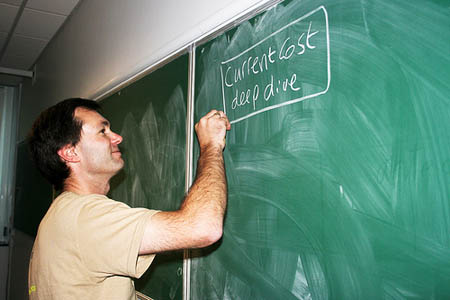
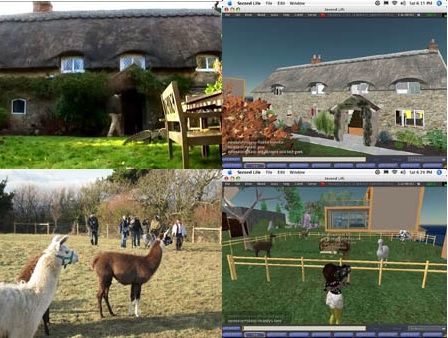
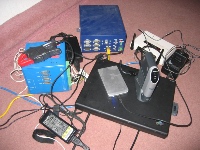
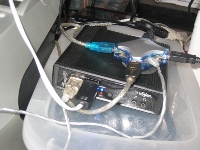
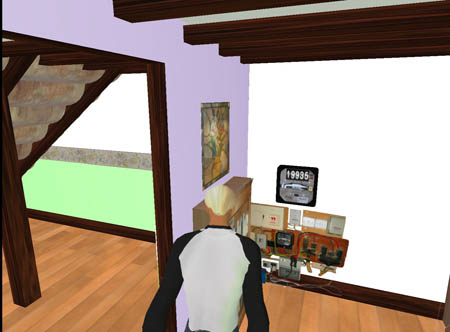
December 15th, 2008 at 1:43 pm
Fantastic article Tish! I would like to mention AgilientVEE & Microsoft Robotics studio as great tools for home/industrial automation. We currently have dozens of http://www.centeron.net fuel probes in FL USA for a fuel delivery company who we are planning to test with using OpenSim and REST services to allow us to show real time fuel tank levels across FL in 3D. Keep these type of excellent articles coming!
December 15th, 2008 at 1:50 pm
Thanks Kyle. I hope you will give a talk and demo on the work you are doing with fuel probes when you have time!
December 15th, 2008 at 2:26 pm
Excellent blog, and in that context wanted to point you to this recently post on Alphaworks: http://www.alphaworks.ibm.com/tech/gaiandb
Sensors, Gaian, MQtt, Social Networks… it really is comming all comming together.
December 15th, 2008 at 2:35 pm
I’m quite taken by the idea of a mashup using a house wired up with MQTT devices, connecting to Pachube.com for graphing, monitoring and AMEE calculations, and Pachube feed to Second Life to represent the carbon footprint of the house in its Second Life implementation… Seems like it should be possible!
December 21st, 2008 at 5:19 pm
Great post! Fascinating. HomeCamp dovetails with the quantified self-measurement movement going on over here in San Francisco. There is so much opportunity for automated and connected measurement tools of all manner of personal biological and behavioral activity. I can see the area being a significant next wave of VC investment. Happy holidays, btw!
January 7th, 2009 at 7:22 am
Excellent post. Just discovered your blog, Tish – loving it.
Andy mentions Onzo. I’ve just posted a Q & A with the CEO, Joel Hagan here…
http://bit.ly/WyDj